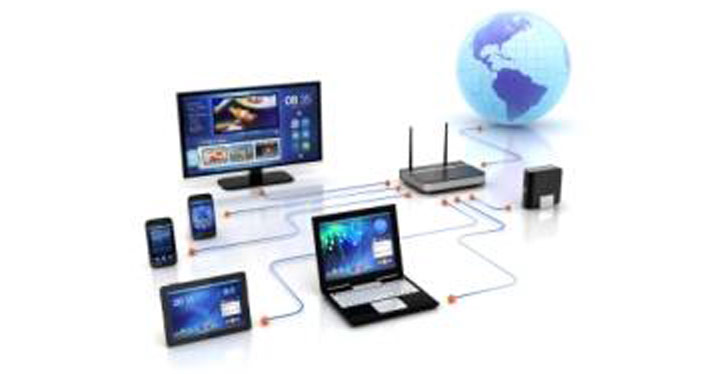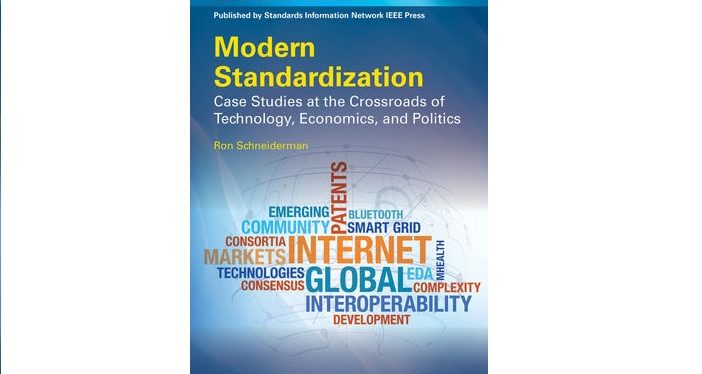Introduction
At the end of the twentieth century, the massive proliferation of the Internet initiated a revolution in our everyday lives. Time-consuming and complex processes like booking a flight became easy. Using e-mail instead of letters printed out on paper helped speed our way of doing business and allowed for dealing with many more customers simultaneously. Having access to all the knowledge of the world at your fingertips enabled much higher productivity throughout the global economies.
The Internet revolution was initially driven through powerful communication servers and performance desktop PCs in highly centrally managed networks. Today, it moves on and spreads out into increasingly smaller devices and many more heterogeneous networks. SmartGrid, IoT (Internet of Things), and Industry 4.0 are all examples of a huge number and high variety of communication networks aimed to interconnect devices of any size to achieve better coordination and get faster access to the operating parameters of their environment.
IEEE 802 technologies like Ethernet (IEEE 802.3), Wi-Fi (IEEE 802.11), WiMAX (IEEE 802.16), and Zigbee (IEEE 802.15.4) are the predominant interfaces used for the increasing density and variety of local and metropolitan area networks. Due to their modularity and interoperability, IEEE 802 technologies are not limited to deployment in a single arrangement like a 4G cellular network. These technologies can be combined and arranged in various ways to accommodate nearly any requirement or operational model.
However, the flexibility and variability of IEEE 802 technologies creates new challenges. While it is common in the established cellular networks to have a single terminal connected through a single radio interface to a single cellular network of a single operator, the IEEE 802 networks do not follow this model. For example, Wi-Fi/IEEE 802.11 is commonly used by individuals who employ multiple devices to receive Internet connectivity through a variety of Wi-Fi access networks consisting of a single or a number of access points; these access points could be used at a home, university, or company, or they could be accessed at stores, coffee shops, or other public places.

Fig. 1. Different deployment scenarios for IEEE 802.11/Wi-Fi.
Moreover, it is not unusual for all of the Wi-Fi access networks to be designed, built, and operated by completely different people and organizations. As an indication of missing widespread knowledge, many of the networks provide only very basic service, not leveraging the full capabilities of Wi-Fi that are available through different devices and access points.
Network Standardization Approach and its Application to IEEE 802 Access Networks
Standardization is a means to provide guidance to designers, manufacturers, and operators with the knowledge to realize interoperable solutions beyond the most basic connectivity. Creating a standard is a process in which a group of engineers and researchers with different opinions and technical ideas creates a description of a common technical solution. The process becomes particularly difficult when the topic is complex, like with communication networks, and the number of participants is large.
Before the development of the Integrated Services Digital Network (ISDN) in the 1980s, the International Telegraph and Telephone Consultative Committee (CCITT), now known as ITU-T, created a set of standards on standardization of communication networks to make this process more manageable. The basic ideas are described in the recommendation, ITU-T I.130. This recommendation defines a three-stage process starting with the collection and specification of service and deployment requirements, which finally leads to detailed protocol specifications for the implementation of the interfaces of telecommunication networks. The second stage develops a logical and functional model to identify the types and functions of the open interfaces in the network. This document has remarkable value beyond just being an intermediate step towards the protocol specification. It provides a highly informative picture of the overall network architecture and operation, which is essential for implementers and operators to gain comprehensive end-to-end understanding of the network, as well as to facilitate market communication for the delivery of services and components by showing how the different pieces fit together.
IEEE 802 adopted the three-stage standardization approach for most of its bigger standardization projects for completely new interfaces, and IEEE 802 working groups commonly create requirement specifications before stepping into the design of the protocol details. However, even when networking requirements have been documented by the projects and all requirements can be fulfilled by the existing IEEE 802 protocol standards, there is no IEEE 802 specification presenting an overall access network architecture and providing an end-to-end functional description. This was not a major issue when IEEE 802 technologies were mostly deployed in smaller isolated networks built and operated by experienced corporate IT departments.
The OmniRAN P802.1CF Project
Today, IEEE 802 technologies are much more widely used and are deployed in higher numbers. The lack of a common approach for the IEEE 802 access network leads to inferior technical solutions missing many of the possible capabilities, and it hinders IEEE 802 networks from growing together and being smoothly interconnected to build the backbone for the massively connected world.
In 2013, this gap was identified by the IEEE 802 OmniRAN Executive Committee Study Group and a new project, P802.1CF, was initiated in May 2014 to create a recommended practice called Network Reference Model and Functional Description of IEEE 802 Access Network. The IEEE 802.1 OmniRAN TG (task group) has completed the first draft specification, and after review and revisions the project will progress to the Working Group ballot.
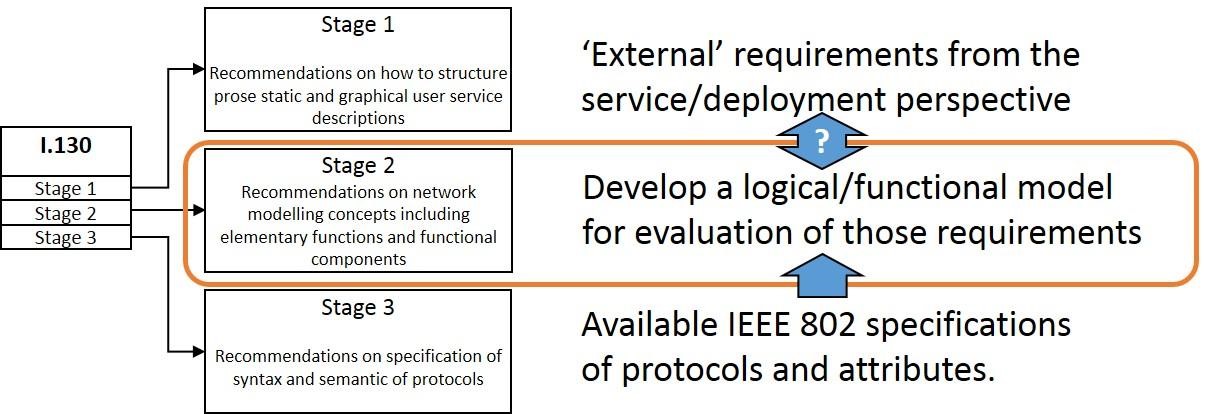
Fig. 2. Three-stage network specification according to ITU-T I.430 and its application to IEEE P802.1CF.
As shown in Fig. 2, the project closes the Stage 2 gap for the IEEE 802 network protocol. Instead of following the sequential order, the project derives the architectural model and functional description not only from the service and deployment requirements, but is also re-engineered from the existing IEEE 802 protocols and common implementations in the market.
The aim is to demonstrate that highly functional and fully managed access networks can easily be built within the existing family of IEEE 802 protocols, and that all needed functions are already available in the IEEE 802 protocol specification. The main purpose of the specification is to establish better understanding and a common view on IEEE 802 access networks. A recommended practice without strict statements for interoperability has been chosen, also recognizing that there is not a single solution for all deployment cases. If demand for more compliance arises in future, a complementary standard with strict compliance statements for that particular deployment case could be created as a profile based on 802.1CF.
Definition of IEEE 802 Access Network
An IEEE 802 access network is characterized by a user plane forwarding Ethernet frames between the network interface in the terminal and the network interface at the access router, where the link is terminated. The specified model should allow for the building of heterogeneous access networks, which may include multiple network interfaces, multiple network access technologies, and multiple network subscriptions, aimed at unifying the support of different interface technologies, enabling shared network control and the use of software defined networking (SDN) principles. It adopts the generic concepts of SDN by splitting the network model into an infrastructure layer and a control layer with well-defined semantics for interfacing with higher layer management, orchestration, and analytics functions. The specification assumes a clear separation of operational roles for the access network, the subscription service, and the IP service to support various deployment models including leveraging wholesale network services for backhaul, network sharing, and roaming.
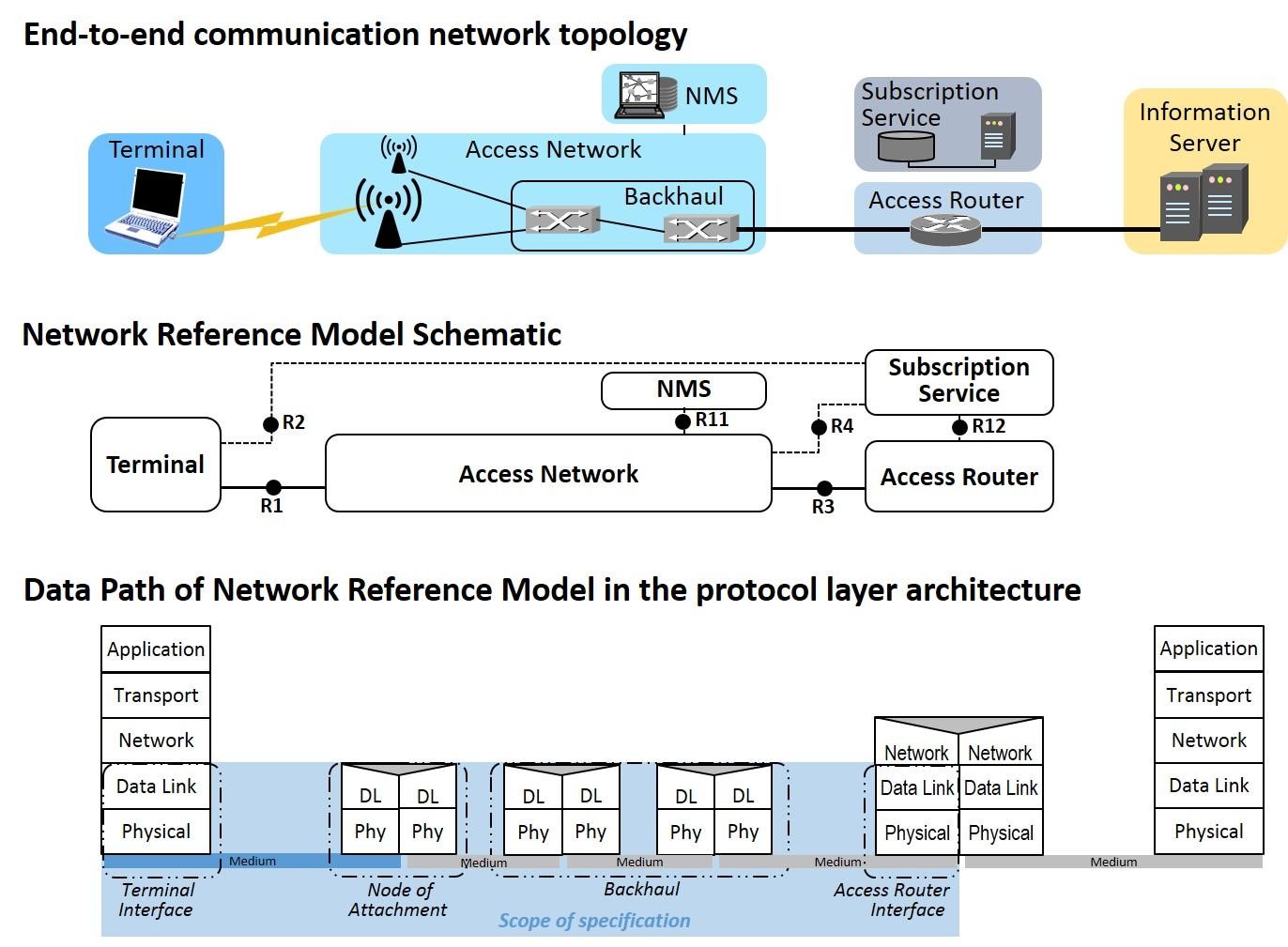
Fig. 3. Mapping of the network reference model to real topologies and its relation to the end-to-end data path.
As part of the end-to-end network model for providing access to IP services, the P802.1CF deals with the communication link between the IP interface in the terminal and the access router. User plane traffic is forwarded based on the MAC addresses in the frames, even when the Ethernet frames are tunneled over some other transport technology in the backhaul. Due to deploying Ethernet in the access network, the functional separation of the user plane and the transport plane in the access network can be avoided, and a combined control model for backhaul connectivity and subscriber specific connectivity can be deployed.
Network Reference Model for IEEE 802 Access Network
At a glance, the network reference model for the IEEE 802 access network consists of the terminal; the access network comprising the node of attachment; the backhaul and the network management system; the access router providing the IP connectivity; and the subscription service dealing with authentication, authorization, and accounting; as well as subscriber-specific policy functions. All of the communication interfaces between the entities are made visible and are denoted by R1 for the interface between the terminal interface and the node of attachment up to R12 for the control interface between the subscription service and the access router control.
Fig. 4 presents the complete NRM, which also exposes the terminal control function in the terminal and the control function in the access router; both are connected to the access network control function. In addition, an entity denoted coordination and information service is provided for the management of shared network resources among multiple access networks such as a spectrum database for controlling access to spectrum in the case of TV white space or licensed shared access, and the network management service is also depicted to enable the description of the functions of a fully-managed access network.
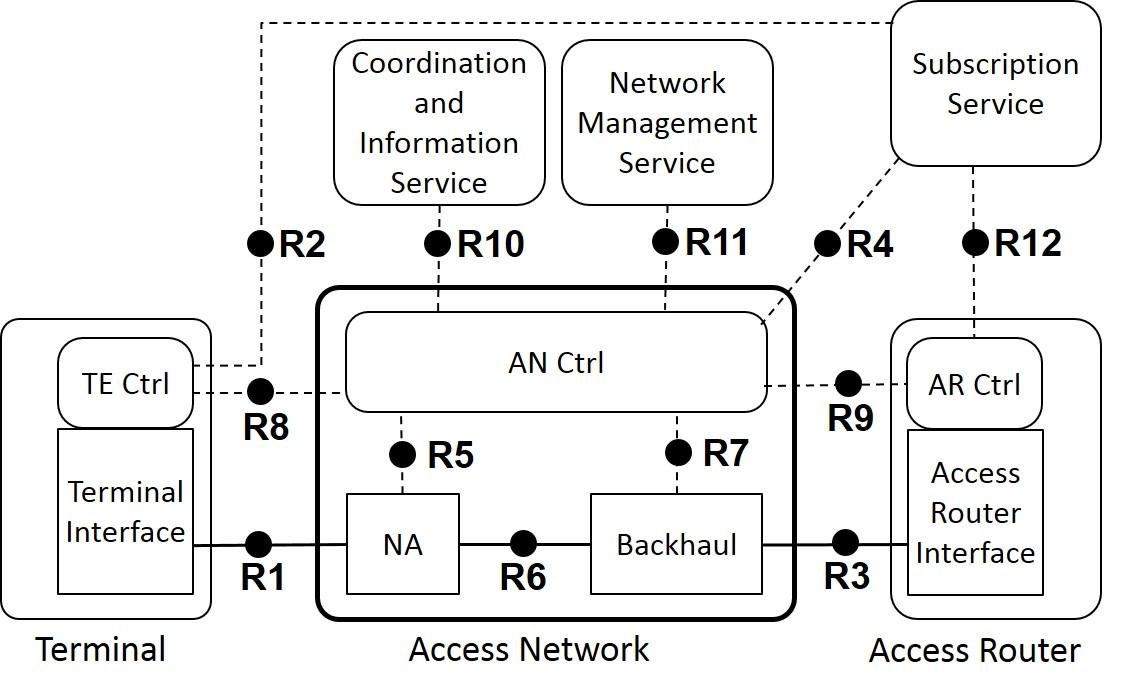
Fig. 4. IEEE 802 access network reference model.
The reference points in the NRM denote either data path interfaces forwarding Ethernet frames (R1, R3, R6) or control interfaces for IEEE 802 related parameters, which may be carried either within IEEE 802 protocols or through IP-based protocols (R2, R4, R5, R7, R8, R9, R10, R11, R12). For the case where IEEE 802 specific identifiers or configuration information is carried through IP protocols, the selection of the particular IP protocol is beyond the scope of the specification. The scope of P802.1CF is limited to the specification domain of IEEE 802 comprising only the PHY and LINK layer of the ISO-OSI 7-layer model. Nevertheless, the comprehensive functional description of the message exchange between the entities of the NRM provides strong guidance for the selection of the IP protocols for the control interfaces.
Achievements and Outlook
Even though the specification is still in its infancy, an architectural and functional description of the IEEE 802 access network is already proving valuable. In a SDN and NFV white paper of the Wireless Broadband Alliance, as well as in the discussions regarding IEEE engagements in the development of 5G converged networks, initial P802.1CF results were used to depict and to reference the network part, which is required to leverage IEEE 802 technologies for providing communication services to subscribers or devices.
Interestingly, the chosen approach for the network reference model has shown remarkable applicability and flexibility. Advanced deployment scenarios like network virtualization or slicing, or advanced implementation techniques like SDN, could be described without any modification to the NRM. These initial experiences with P802.1CF provide strong evidence that the final specification will be able to provide guidance for future IEEE 802 networking and will foster more widespread deployment of managed IEEE 802 access networks, thus making the massively connected world feasible.
References:
[1] IEEE P802.1CF documents archive. [Online]. Available: https://mentor.ieee.org/omniran/documents [2] IEEE 802.1 OmniRAN TG home page. [Online]. Available: https://mentor.ieee.org/omniran/bp/StartPage Max Riegel
Max Riegel
maximilian.riegel@nokia.com
Max Riegel received his Dipl.-Ing. degree in electrical engineering from the Technical University Munich, Germany, and is currently head of IEEE standardization within Nokia Networks.
He has been involved with IEEE 802 standardization for more than 15 years, participated in various projects and committees, and is currently chair of the IEEE 802.1 OmniRAN TG, as well as voting member of the IEEE802.11. Previously, he supported IEEE DySPAN-SC as vice-chair and parliamentarian, was the vice-chair of the networking working group in the WiMAX Forum, and led the Ethernet over cellular systems specification work in IETF 16ng WG.

